Controlled living space ventilation - energy-efficient with heat recovery
The building envelopes of new and refurbished old buildings are becoming ever denser due to the energy-efficient construction. That is why it is important to ensure a regular exchange of air for a pleasant living environment and the protection of the building fabric from moisture and subsequent mold. The usual ventilation behavior with manual air exchange (for example, by intermittent ventilation) is usually not sufficient. Controlled living space ventilation provides a remedy. It ensures a regular exchange of air in the house or apartment with consistently high air quality. Controlled ventilation is mechanical ventilation supported by a fan. If the controlled living space ventilation is provided with heat recovery, the residents save heating costs in the long term. There are two types: on the one hand, central ventilation systems, on the other hand, decentralized ventilation systems.
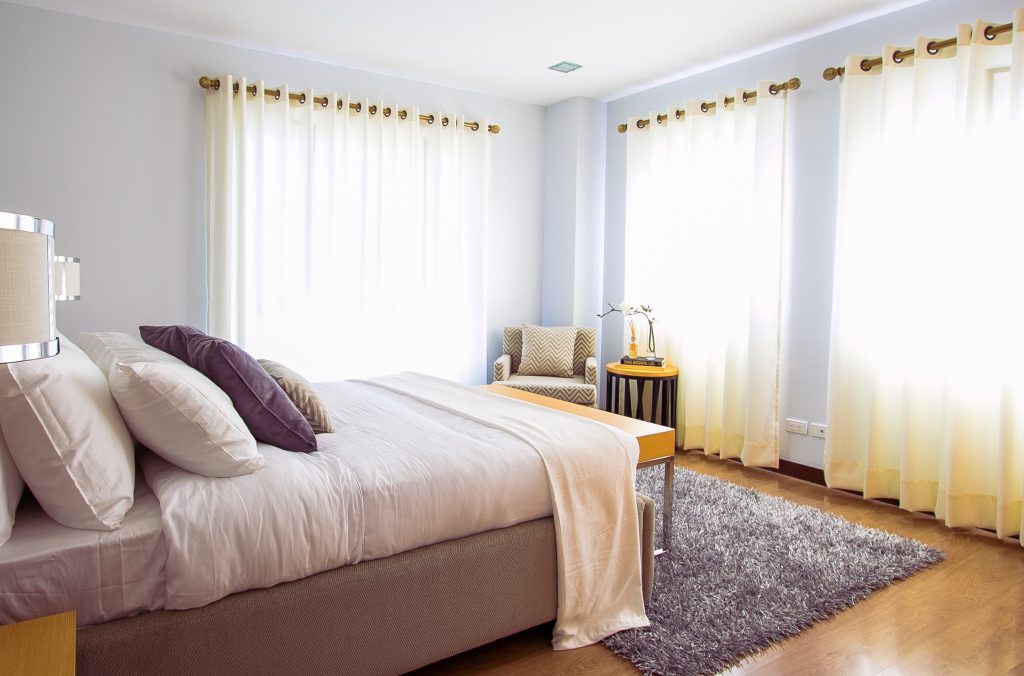
Advisory topics:
- Controlled living space ventilation - when and why?
- Controlled ventilation - centralized or decentralized?
- Central ventilation for factory buildings - decentralized ventilation for your home
- The essential functions of a decentralized, controlled living space ventilation
- In 3 steps to controlled living space ventilation
- What you should consider before buying a controlled home ventilation system
- Advantages of decentralized living space ventilation
- The seven big pluses of decentralized controlled living space ventilation
- What else speaks in favor of decentralized controlled home ventilation
- Advantages of decentralized ventilation when installing in a new building
- Conclusion: Quality and service - controlled living space ventilation "Made in Germany"
Central ventilation systems direct fresh air into living rooms such as living rooms, bedrooms and children’s rooms via an air duct system. The used exhaust air, on the other hand, is extracted from the kitchen, bathroom and toilet. A central heat exchanger, which returns the heat from the exhaust air to the supply air, ensures heat recovery. The air silencers installed in the pipe network suppress the air noise from the fan motors and prevent sound transmission from one room to another. In addition, particle filters remove dust, soot or pollen from the supply air. Central systems are more complex to install because the ventilation ducts have to be routed to the system from every ventilated living space. As a rule, they are only suitable for new buildings. The subsequent installation in the existing building causes a large structural and financial expense.
Decentralized ventilation systems for controlled living space ventilation supply the individual rooms with fresh air. For this, decentralized fans are integrated directly into the outer walls of the house or apartment. Two devices each form a pair of ventilation systems. These ensure controlled living space ventilation through an integrated reversing fan, alternating between supply and exhaust air mode. A ceramic heat accumulator inside the fan ensures heat recovery in controlled living space ventilation. This absorbs the heat from the used room air and releases it back into the fresh air. In this way, decentralized ventilation systems achieve a high level of energy efficiency. Further advantages are the quick and easy installation – regardless of whether it is an old or a new building. In addition, they are usually cheaper to buy. A detailed comparison of the types of ventilation can be found here.
Controlled living space ventilation - when and why?
Interiors are mostly heated, inhabited or used for business. The air is consumed by humans, which leads to an increase in the CO2 content. Accordingly, used air must be directed outside (ventilation) and unused air inside (ventilation). In commercial or hobby rooms, solvent vapors or foreign substances can also pollute the room air, while water vapor, moisture and odors occur in kitchens and bathrooms. This is not a problem for a day or two. However, if the ventilation is permanently inadequate, this can lead to mold growth and health risks. The high levels of pollution and pollutants can come from vapors from furniture, floor coverings or even toys. If there are increased concentrations, these are measured by the sensors and the controlled ventilation system automatically switches to increased air volume flows and removes these pollutants until the values fall below the limit values again.
This is why controlled home ventilation is a central aspect for well-being, health and the protection of the building fabric and interior. But which principle of controlled living space ventilation is the right one?
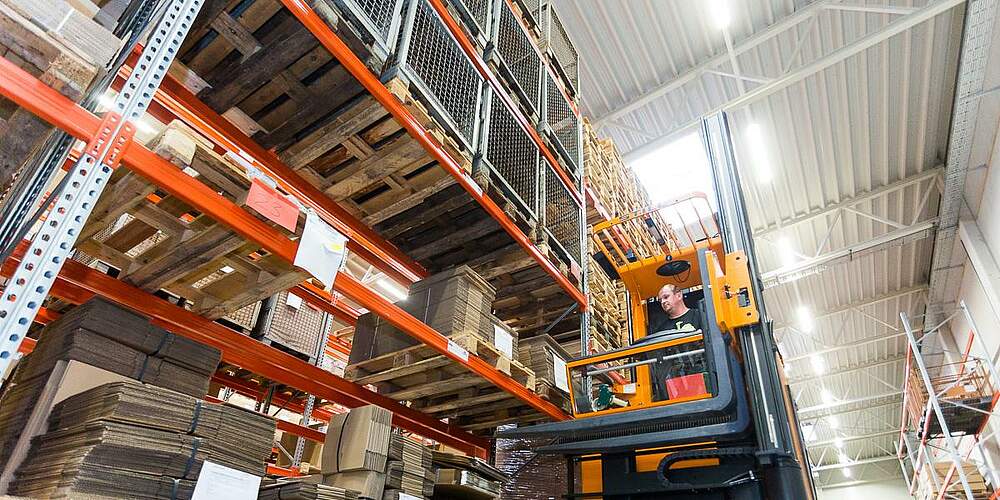
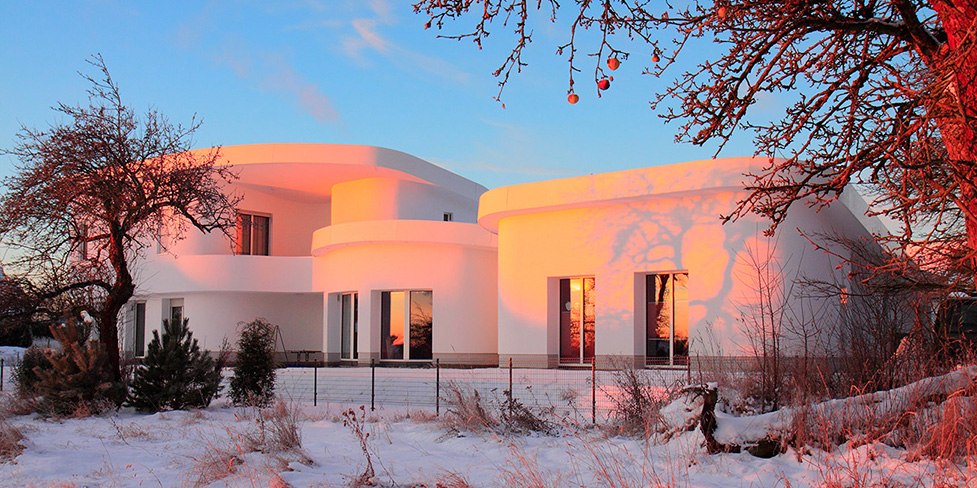
Controlled ventilation - centralized or decentralized?
Central ventilation sucks in the air in your rooms and adds new air by sucking in and blowing the air flow separately through laboriously laid pipes. Very long distances and large cross-sections often cause unpleasant noise development and excessive energy consumption. Especially when the fresh supply air also has to be heated.
A decentralized, controlled ventilation system, on the other hand, removes used air through a single hole in the outer wall and supplies fresh air again through the same hole. The ventilation path is kept short and also dimensioned much more precisely to the actual space requirement. The ventilation duct is limited to the length of the outer wall, which also ensures easy cleaning by every user without having to call in an outside company. Depending on how the room is used, you can switch decentralized ventilation on or off or activate it by means of a timer.
Central ventilation for factory buildings - decentralized ventilation for your home
In other words: Central ventilation is now ideally suited for large factory halls or storage rooms, the function of which is not divided into many different areas. Because the long distances lead to a higher energy consumption than is actually necessary for the ventilation. And not to be underestimated: In the event of a failure, all rooms are always affected immediately.
A decentralized ventilation system, on the other hand, can be installed individually for each room through an uncomplicated core hole and individually dimensioned and regulated to meet the space requirements. This does not require any special planning effort and the interior architecture is not affected by the systems. A sound-insulated and heat-insulated fan for each hole in the wall ensures that the room “breathes” almost silently and supplies it with fresh air at room temperature using heat exchange technology. This saves you noticeably costs in planning, energy consumption and heating.
You can find out which type of ventilation is best for you here in the inVENTer-Check
The functioning of a decentralized control room ventilation
How does controlled living space ventilation work? The way in which controlled living space ventilation works differs in two variants. Their application depends on the premises for which you are planning ventilation.
Variant 1: Functionality of controlled living space ventilation without heat recovery
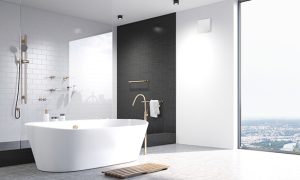
Variant 2: Functionality of controlled living space ventilation with heat recovery
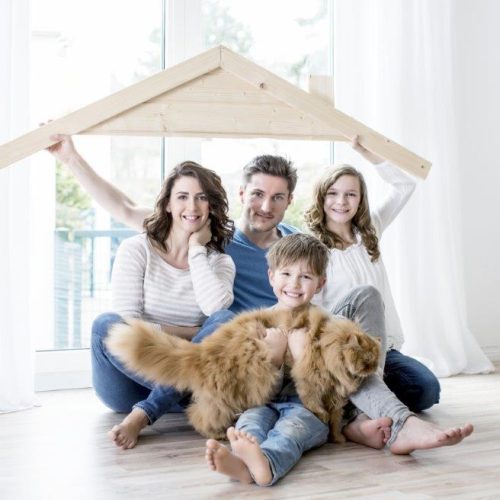
You can control the ventilation with a zone controller (with inVENTer the MZ-Home or Easy Connect system)
Switch on and off separately for each room – depending on what makes the most sense for the respective room. And that happens fully automatically, because the sensor system reacts to humidity peaks and increased CO2 content and switches the fan on and off automatically.
By the way: The direction of rotation of the fan only changes in heat recovery (WRG) mode. In summer, at night in the bedroom or in “party mode”, manual switching also allows simple exhaust air or supply air operation if no heat recovery is required. Then a heat recovery unit also works like a simple exhaust air device.
The most important advantages of decentralized ventilation
- The room climate remains optimal for health and is individually adapted.
- Your building structure and the interior are protected from moisture and thus from damage such as mold infestation
- Air quality, CO2 content and humidity can be coordinated very economically with the room temperature and thus the heating costs.
For single-family houses, you will find our overview of planning, costs, structure and ventilation requirements with devices from InVENTer here
In 3 steps to controlled living space ventilation
If you want to equip your house or a larger residential unit with decentralized ventilation, there is a workflow in 3 steps:
1. Controlled living space ventilation: Design and planning of decentralized living space ventilation
When planning and designing a ventilation concept, you have to consider several parameters. According to the Energy Saving Ordinance (EnEV 2014, Section 6 Paragraph 2), a concept is required for all new buildings and for the renovation of single and multi-family houses as soon as more than a third of the windows are replaced or a major roof renovation with more than a third of the Roof area is coming. According to the EnEV, a simple reference to regular window ventilation by the user is no longer sufficient. Accordingly, a ventilation concept must be created that is based on the number of people in the house, room arrangement, interior volume, geographical location and the building’s tightness. Basically, you have to guarantee an air exchange of 30 cubic meters per person and hour or an air exchange of around 0.4 of the room volume.
For all details of the ventilation planning, please click here.
2. Controlled domestic ventilation: Promotion of decentralized controlled ventilation
Decentralized ventilation systems are eligible and can be subsidized by KfW if new buildings or renovations meet certain energy efficiency rules. Since April 17, 2018, new regulations apply here for the efficiency houses KfW 40 plus and KfW 55 as well as for energy-efficient renovation. inVENTer will be happy to help you and will create a ventilation concept for you free of charge, which contains the energetic key data for your KfW application.
Here you can find all funding conditions and the inVENTer ventilation concept.

3. Controlled living space ventilation: installation of decentralized living space ventilation
After you have decided on the arrangement, the performance and the type of device, the installation of a decentralized ventilation system is relatively straightforward. The basis of the renovation is always a core hole drilling with a milling drill, which creates an opening in an outer wall. In the case of a new building, there is no need for core drilling if you opt for the Simplex assembly system. The new assembly system, including a pipe with a gradient, is integrated directly into the shell instead of the brick and covers masonry thicknesses from 175 to 490 millimeters. The fan is fitted into this opening. In addition, of course, there must be a line to carry the current. Our customer service will be happy to advise you if you have any questions.


A controlled, decentralized ventilation system also makes sense as a retrofit
Decentralized living space ventilation systems are particularly recommended for the renovation of existing apartments or buildings. The simplified installation through a core hole saves you complex piping systems or shafts, which would otherwise impair the appearance and character of the house.
This is a worthwhile investment and sometimes required by law. According to DIN 1946-6, a ventilation concept is required for renovations if more than a third of the windows are replaced or more than a third of the roof area is sealed.
Here you can find important details, tips and tricks for renovation and retrofitting
What you should consider before buying a controlled home ventilation system
Tip 1: pay attention to the sound values
When buying a device for decentralized ventilation, you should pay attention to the ratio of air volume flow (LVS) and sound. It is not only the individual values that count here, but also the performance depending on the ventilation level. Because even when there is good air, the constant volume of the fan can seriously impair your quality of life.
Tip 2: check providers carefully
The ventilation industry is relatively young. There are many providers, but only a few securitized and reputable quality. Therefore, the same applies here: cheap is not always good. If you save at the wrong end, you have to tinker, upgrade or even replace a lot at the other end. That causes costs and annoyance. The quality seal “Made in Germany” can give an initial orientation towards quality products and is usually associated with an increased guarantee.
Tip 3: cleaning and care
You can also recognize high-quality workmanship and quality by the various small parts when you take the device apart for cleaning. Small parts can easily break apart from inferior manufacturers, and replacements are then difficult to obtain from them.
Advantages of decentralized living space ventilation
In the case of a renovation or a new building, a decentralized ventilation system for controlled ventilation is more energy-efficient than central ventilation, if the heat recovery is included in the calculation of electricity consumption and all heating costs.
The seven big pluses of decentralized controlled living space ventilation
- easy assembly and installation
- comfortable, separate control in different rooms
- A comfortable climate and high living comfort thanks to fresh air rich in oxygen
- Cost savings by preserving the heating energy with heat recovery
- Preservation of the value of the building structure, because the ventilation prevents the formation of mold
- Protection against pollen and dust through appropriate filters
- low power consumption / operating costs (approx. 6 € per year per ventilation unit)

What else speaks in favor of decentralized controlled home ventilation
Decentralized fans are easy to clean and require little maintenance. This applies to both cleaning the heat storage tank and the very simple filter change. You don’t need to use a specialist to do this, you can simply lend a hand yourself. In addition, thorough cleaning every six months is sufficient – for example during spring and autumn cleaning. And not to be underestimated: There are no drafts in the rooms.
Advantages of decentralized ventilation when installing in a new building
- No duct routing, less wall and ceiling construction
- Increased security against break-ins compared to tilted windows
- High safety thanks to safety extra-low voltage
- Protection against insects
- Continuous operation possible 24 hours
- Automatic control via sensors possible (humidity sensor, CO2 sensor, VOC sensor, dew point control for basement areas, etc.)
- List item
Conclusion: Quality and service – controlled living space ventilation “Made in Germany”
As professionals for controlled living space ventilation, inVENTer offers you: Free planning support
- Regional contacts
- System provider: a solution for every installation situation
- Energy efficiency class A + / A
- Very good basic equipment of the products (e.g. integrated G4 filter)
- Numerous expansion options
- Soundproofing solutions
- Secure packaging
- Backward compatibility
- Simplex: custom-made wall mounting block; for a faster construction process
- Additional income through maintenance contracts (uncomplicated cleaning, easy maintenance)


